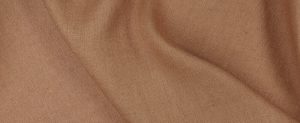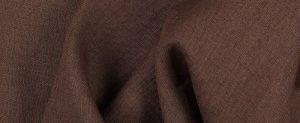King Henry VIII: Lavish, Sumptuous Excess
Notorious King Henry VIII had a voracious appetite for life. During his reign over England from 1509 to 1547, he was married six times, divorced twice and his love of fine foods and wines saw his waistline nearly double throughout his lifetime. But of all his heady excesses, clothing was the most outwardly indulgent, leading him to spend the equivalent of over $3 million every year on only the finest attire. Such resplendent showmanship was an expression of his regal importance, while one observer in Venice during his reign commented, “He is the best dressed sovereign in the world: his robes are the richest and most superb that can be imagined, and he puts on new clothes every holy day.”
During Henry’s reign, the role of fashion as a political tool evolved significantly. Made King at just 18 years old, Henry and his many advisors developed an understanding of how clothing could emphasise his masculinity, virility and status. At 6 foot 3, during a time when most men were 5 foot 7 or 5 foot 8, Henry’s tall, slim and athletic build already had a physical presence which could be astutely built upon. Huge, excessively padded sleeves emphasised his broad shoulders, while “slashing” was common in his clothing, in which cut slits in an overgarment revealed many decadent layers of fabric underneath, most commonly on shoulders, sleeves and breeches. This act, exposing multiple layers of expensive fabrics, became a flashy symbol of monetary status.
Henry also led the fashion for doublets, or wide shouldered waistcoats and jackets with a skirt or “bases” attached at the waist, sometimes featuring separate sleeves laced into eyelet holes on the shoulder. The skirt of doublets was opened at the front to provocatively reveal a bulging codpiece in the centre, which Henry deliberately and pointedly exploited to highlight his masculine fertility. Over this attire he wore long capes or mantles, lending him an authoritative, commanding stature.
Fabric types and decoration were also deeply significant and symbolic during Henry’s reign. Certain laws restricting the finest furs, fabrics and embroideries for royalty and the nobility were passed, lending clothing even greater political weight and significance as a marker of social rank. As portraits of Henry from his official painter, Hans Holbein, reveal, the King wore silk in various forms including velvet, damask, brocade and satin, stitched into elaborate doublets with huge, padded shoulders. He also favoured cloths of gold and silver, which had precious metal woven into their warp, lending them the metallic sheen and gloss of wealth and power. Shipped from Venice and Genoa, these fabrics were extortionately expensive, with cloth of gold coming up as the most valuable – worth around $3,000 per yard by today’s standards.
From these fine fabrics the King’s personal tailor, Stephen Jaspar, produced lavish, sumptuous doublets and mantles inspired by foreign lands, taking inspiration from cultures in Russia, Germany, Hungary and Turkey, which never failed to make a dramatic impact. Jaspar fashioned outfits in dazzling colours for Henry to wear, adding to their theatrical impact, combining deep shades of blue and red thick-piled velvet with shimmering satins in silver, gold and purple.
As he grew older, Henry’s clothing became ever more opulent and indulgent. A lover of elaborate embroidery, cutwork, and eyelets, Henry had swathes of intricate detailing incorporated into his costumes; some of his clothing was said to be so encrusted with diamonds, rubies and other gemstones that you could barely see the fabric beneath. Wasteful and indulgent into his later years, the King would sometimes order and have large quantities of expensive fabric cut, only to change his mind and discard it at the last minute. Along with fine fabrics, the King also had a weakness for armour and jewellery, amassing a vast, extensive collection throughout his lifetime, some of which can be seen in Holbein’s majestic portraits of the English King.
Hugely influential during his lifetime and beyond, the indulgent layers of rich fabrics and huge, exaggerated silhouettes worn by Henry VIII defined the aesthetics of the Tudor era for both men and women’s fashion. But perhaps more than ever before, Henry revealed the almighty, physically disarming power of clothing, and its inherent role as a tool for political propaganda.






































3 Comments
Celeste Yanisch
Ms. Rosie, I enjoy your posts so much. Thank you for all you do. I wonder if you could answer a question I have had for decades. In clothing with the “slashes”, were the slashes actual cuts in the fabric that left raw edges? Or were they seamed lines that had stitches removed for the slashes? The seamed lines method would be the neatest but would require really really thick sleeves with the doubling of fabric. I go to museums hoping to see how this was done but have never gotten an answer.
Julieanne Tobin
Thank you for these articles that show the power of fabrics in history. Thoroughly enjoy reading the articles along with the visual.
Trish Seifert
I just love reading these histories of fashion. Absolutely fascinating! Thank you for feeding my curiosity of all things fabric and adornment!